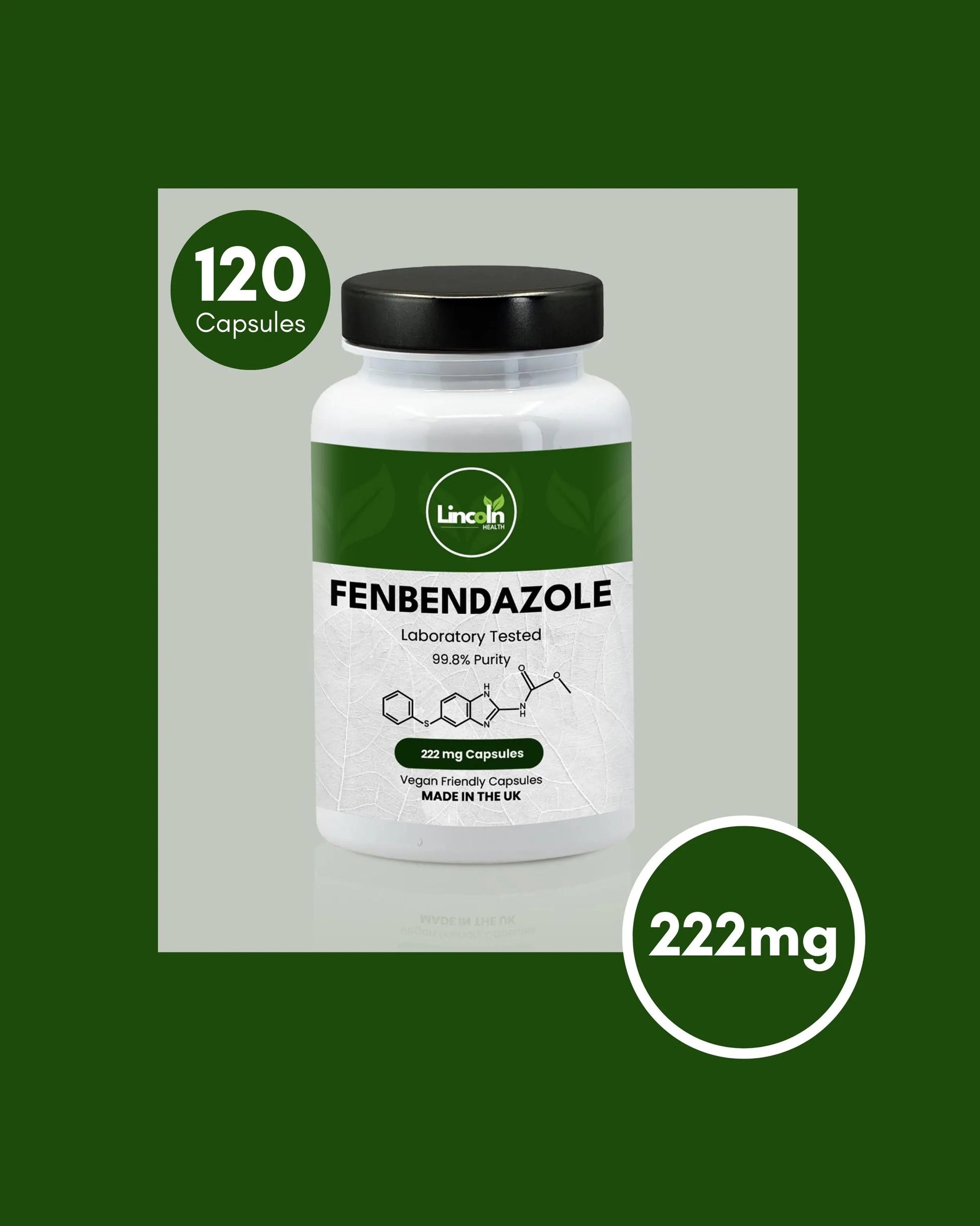fenbendazole 444: A Full Guide for Pet Owners
Discovering the Mechanisms Behind Fenbendazole and Its Effect On Animal Wellness
Fenbendazole is an extensively used anthelmintic known for its efficiency versus numerous bloodsuckers. Its primary system includes the restraint of microtubule development, which interferes with vital procedures in these microorganisms. Past its antiparasitic properties, fenbendazole additionally shows up to boost immune reactions and possesses anti-inflammatory advantages. Comprehending these diverse effects can expose new applications for animal health. Nonetheless, questions continue to be concerning its complete capacity and safety and security profile.
The Pharmacokinetics of Fenbendazole
The pharmacokinetics of fenbendazole, a commonly utilized anthelmintic in vet medicine, involves the research study of its absorption, distribution, metabolic rate, and discharging within pet systems. After management, fenbendazole is quickly taken in from the gastrointestinal system, with peak plasma focus taking place within hours. Its distribution is affected by aspects such as tissue binding and lipid solubility, allowing it to permeate various tissues properly. The medicine goes through substantial metabolism primarily in the liver, where it is transformed right into active and inactive metabolites. These metabolites contribute in the medication's overall effectiveness and security account. Excretion happens mainly through feces, with a smaller percentage removed using pee. The half-life of fenbendazole varies among species, which influences application regimens. Understanding these pharmacokinetic homes is essential for maximizing its healing usage and guaranteeing reliable parasite control in vet practices.
Devices of Action Versus Parasites
Fenbendazole applies its antiparasitic results mainly through the inhibition of microtubule development in parasites. This disturbance affects their architectural honesty and cellular features, leading to damaged energy metabolism. Consequently, the medication successfully compromises the survival and recreation of various parasitic organisms.
Inhibition of Microtubule Development
Inhibition of microtubule formation stands for an essential system through which particular anthelmintic agents, consisting of fenbendazole, exert their results on parasites. Fenbendazole binds to tubulin, a protein that develops microtubules, interrupting the polymerization procedure needed for microtubule assembly. This disruption hinders essential cellular functions, including mitosis, intracellular transportation, and architectural integrity. As microtubules play an essential duty in maintaining the shape and feature of parasitic cells, their inhibition results in cell cycle apprehension and eventual death of the bloodsucker. This mechanism is especially reliable against nematodes, as their dependence on microtubules for mobility and nutrient absorption makes them susceptible to fenbendazole. As a result, the restraint of microtubule development is a critical facet of fenbendazole's restorative efficiency in vet medicine.
Disturbance of Basal Metabolism
Interrupting power metabolic process is an additional essential mechanism by which fenbendazole targets parasitical microorganisms. This anthelmintic changes the energy production paths within bloodsuckers, primarily affecting their capacity to generate adenosine triphosphate (ATP) By inhibiting glucose uptake and disrupting mitochondrial feature, fenbendazole restrictions the power resources crucial for the survival and recreation of these microorganisms. Therefore, parasites come to be increasingly at risk to ecological tensions and immune actions. The interference in energy metabolism not just influences the parasites directly yet likewise minimizes their ability to absorb nutrients, further hindering their growth - 222 mg. Generally, the disruption of power metabolism stands for a fundamental facet of fenbendazole's efficacy versus various parasitic infections, adding significantly to boosted animal wellness outcomes
Possible Negative Effects and Security Profile
The potential adverse effects and security account of fenbendazole warrant cautious consideration, particularly in vet applications. While normally considered as secure, some animals might experience unfavorable responses, including intestinal disturbances such as throwing up and looseness of the bowels. In addition, neurological signs, although uncommon, have been reported in delicate individuals, highlighting the demand for monitoring during treatment.

Fenbendazole's safety and security in various species, consisting of dogs and cats, has been documented, however dose and period of therapy should be carefully managed to lessen dangers. Expectant or breast feeding animals may also require special interest, as the results on developing fetuses or nursing children are not totally comprehended.
Normal veterinary examinations can aid mitigate prospective adverse effects and ensure the medicine is carried out appropriately. Consequently, while fenbendazole is an effective anthelmintic Source representative, watchfulness regarding its adverse effects is vital for maintaining animal health.

Fenbendazole's Influence on Immune Function
Fenbendazole has actually been kept in mind for its potential to regulate body immune system actions in pets. Its anti-inflammatory buildings might contribute to enhanced immune function, providing a twin benefit in handling health and wellness (fenbendazole 222). Comprehending these effects is crucial for examining fenbendazole's role in vet medicine
Body Immune System Modulation

Anti-inflammatory Features
Anti-inflammatory results stand for a significant aspect of fenbendazole's impact on immune feature. Study shows that fenbendazole may decrease the manufacturing of pro-inflammatory cytokines, which are crucial in moderating inflammatory feedbacks. By regulating these cytokines, fenbendazole can possibly reduce inflammation-related conditions in animals. This anti-inflammatory action not only aids in taking care of signs and symptoms linked with numerous illness but additionally enhances total body immune system effectiveness. Furthermore, its ability to advertise a well balanced immune action assists avoid excessive inflammatory damages, which can cause chronic health concerns. As a result, fenbendazole's role in swelling administration underscores its relevance in vet medicine, providing a dual advantage of antiparasitic action and immune system support for animal wellness.
Applications Past Traditional Parasitical Infections
While primarily identified for its effectiveness versus various parasitical infections, fenbendazole has gathered attention for prospective applications yet typical scope. Recent research studies recommend that fenbendazole might have beneficial impacts on cellular wellness and immune reaction, making it a fascinating prospect for taking care go now of various other wellness conditions in pets. For instance, its reported anti-inflammatory homes might provide relief for animals struggling with persistent inflammatory diseases. In addition, some research suggests that fenbendazole can contribute in sustaining the overall wellness of animals by boosting nutrient absorption and intestinal wellness. Moreover, its prospective as a complement therapy in cancer treatment has actually triggered passion, as preliminary findings suggest it might hinder lump cell development in certain contexts. These varied applications highlight fenbendazole's convenience, urging more expedition right into its diverse advantages for pet health and wellness beyond its standard usage as a deworming representative.
Future Research Study Directions and Ramifications for Animal Health
The expedition of fenbendazole's possible applications has opened new avenues for study focused on improving animal health and wellness. Future studies might focus on its efficiency versus a wider variety of microorganisms, including germs and viruses, therefore increasing its role in vet medicine. The effects of fenbendazole's systems, such as its effect on immune inflection, warrant further examination to recognize exactly how it can bolster overall health in various varieties.
Furthermore, research might explore perfect does and formulas to take full advantage of effectiveness while minimizing possible adverse effects. Investigating fenbendazole's collaborating effects with various other medications can bring about more effective therapy procedures. Longitudinal researches examining long-term results in pets treated with fenbendazole can provide valuable understandings into its security and effectiveness. Generally, the ongoing exploration of fenbendazole provides promising capacity to boost animal wellness, necessitating a collective approach among scientists, veterinarians, and pharmaceutical designers to facilitate innovations in this area.
Often Asked Inquiries
Can Fenbendazole Be Used in Livestock for Parasite Prevention?
The inquiry of whether fenbendazole can be made use of in animals for bloodsucker avoidance matters, as producers look for effective therapies (fenbendazole 444). Study indicates it might offer advantages, however appropriate standards and veterinary recommendations are important for safe usage
What Is the Advised Dose of Fenbendazole for Various Pets?

Are There Any Known Drug Interactions With Fenbendazole?
Current expertise shows that fenbendazole might interact with particular medicines, potentially impacting their effectiveness or metabolic process. Veterinary specialists advise speaking with a vet to examine individual animal situations and identify any possible communications prior to management.
Exactly How Does Fenbendazole Compare to Various Other Antiparasitic Medicines?
Fenbendazole is typically compared to various other antiparasitic medicines based upon effectiveness, spectrum of task, and security accounts. It is favored for its performance versus a broad range of bloodsuckers while normally displaying marginal adverse effects in animals.
Is Fenbendazole Effective Versus Viral or Bacterial Infections in Pets?
The effectiveness of fenbendazole versus viral or microbial infections in animals continues to be unproven. Research mostly concentrates on its antiparasitic residential properties, with restricted proof supporting any kind of function in dealing with non-parasitic infections in veterinary medication.